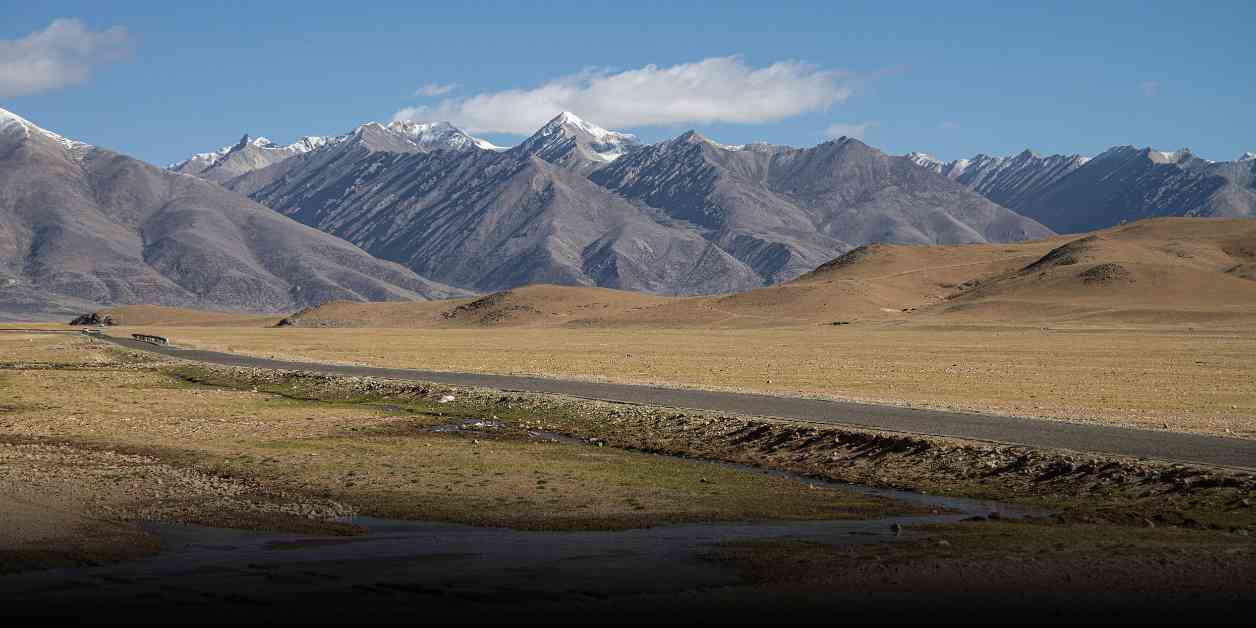A groundbreaking study conducted in China has revealed significant environmental changes taking place on the Qinghai-Xizang Plateau as a result of climate change. This transformation is turning the mountainous region into a vast grassland, with far-reaching implications for ecosystems, water resources, and global climate patterns.
The Qinghai-Xizang Plateau: A Critical Ecosystem Under Threat
The Qinghai-Xizang Plateau, also known as the Tibetan Plateau, is a vital ecosystem located in western China, stretching from the Himalayas to the Kunlun Mountains. It holds the planet’s third-largest concentration of ice and snow, trailing only the polar regions in ice coverage. This vast expanse of glaciers and permafrost plays a crucial role in regulating global climate patterns and supporting the water resources of millions of people in Asia.
Scientists have long been concerned about the potential impact of climate change on the Qinghai-Xizang Plateau. The rapid pace of global warming is causing glaciers to melt at an alarming rate, leading to profound environmental changes on the plateau. As glaciers disappear and permafrost thaws, the landscape is being transformed into a green, grassy terrain, altering the delicate balance of ecosystems in the region.
The Impacts of Glacier Melt on Water Resources
One of the most pressing concerns stemming from the melting glaciers on the Qinghai-Xizang Plateau is the impact on water resources in Asia. The glaciers on the plateau feed three of Asia’s largest rivers – the Yellow River, Yangtze River, and Mekong River. A rapid melt-off of these glaciers would not only contribute to rising sea levels and accelerate climate warming but also jeopardize the water supply for millions of people who depend on these rivers for irrigation, drinking water, and hydropower.
According to the latest survey of the plateau conducted by Chinese researchers, the process of glacier melt is already underway. The study, which began in 2017 and involved over 28,000 scientists making 2,600 trips to the region, revealed significant changes occurring on the plateau. Yao Tandong, an academician of the Chinese Academy of Sciences and the project leader, highlighted the disruptions to ecosystems and water resources across Asia caused by the warming and wetter conditions on the plateau.
The Greening of the Qinghai-Xizang Plateau
Despite the sobering implications of glacier melt, the study also uncovered some positive environmental effects resulting from the transformation of the Qinghai-Xizang Plateau. Over the past 15 years, the region has become greener as grasslands and forests replace glaciers and permafrost. The proportion of the plateau covered by “high-quality grassland” and forest has increased by 6% and 12%, respectively, contributing to a more vibrant and diverse ecosystem.
This expansion of green space has led to the plateau absorbing more carbon dioxide than before, with researchers estimating that it now removes up to 140 million tons of carbon annually. The increased biodiversity on the plateau is evident in the discovery of 3,000 new species, including 205 new animals and 388 new plants. Rare animals such as snow leopards and Bengal tigers are making a comeback, signaling a positive shift in the region’s ecological health.
The Urgent Need for International Cooperation
Despite the positive aspects of the plateau’s transformation, the reduction of glacier and snow coverage poses a significant threat to water resources and climate stability in the region. With scientific models projecting a loss of more than half of the glacier mass by the end of the century, there is an urgent need for coordinated international action to address the growing imbalances in Asia’s water supply.
Yao Tandong emphasized the need for global collaboration to mitigate the impacts of climate change on the Tibetan Plateau. As the plateau continues to become warmer and greener, it is essential to develop strategies to preserve water resources and biodiversity while also addressing the broader implications for global climate patterns.
In addition to the environmental changes taking place on the Qinghai-Xizang Plateau, the study uncovered several other significant findings. Researchers discovered a set of ancient hand and footprints dating back to around 200,000 years ago near Lhasa, which some have described as the world’s oldest known artwork. The creation of a database of natural disasters in the region and the establishment of a disaster monitoring system along major transportation routes on the plateau are critical steps in predicting and managing future environmental challenges.
As the Qinghai-Xizang Plateau undergoes a profound transformation from a mountainous region to a vast grassland, the implications for ecosystems, water resources, and global climate patterns are becoming increasingly clear. The urgent need for international cooperation to address the challenges posed by climate change on the plateau underscores the importance of proactive measures to protect this critical ecosystem for future generations.

















